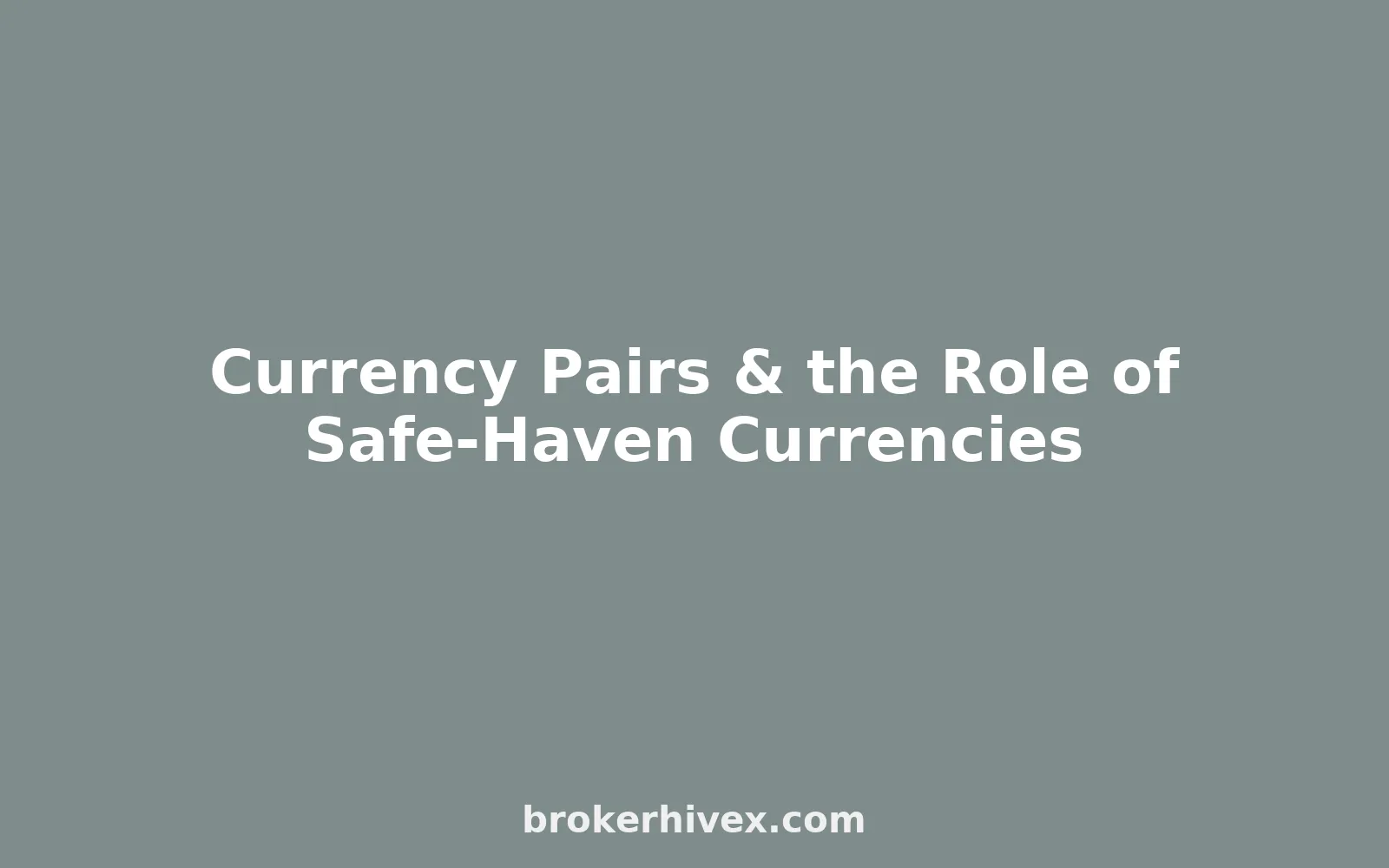Introduction to the role of currency pairs and safe-haven currencies:
Summary:Currency pairs are the core trading units in the foreign exchange market, while safe-haven currencies serve as a safe haven for capital during periods of market turmoil. This article systematically analyzes the classification of currency pairs, the characteristics of major currency pairs, the role of safe-haven currencies, and typical market examples. A table will also illustrate their position in the global foreign exchange market.

1. Definition and Classification of Currency Pairs
A currency pair is a quoted combination of two currencies in foreign exchange trading, for example EUR/USD represents how many US dollars can be exchanged for 1 euro.
Classification
| type | Features | Typical currency pairs | Market position |
|---|---|---|---|
| Majors | Contains US dollars and has the highest liquidity | EUR/USD, USD/JPY, GBP/USD, AUD/USD | Accounting for more than 70% of global trading volume |
| Crosses | Currency pairs without the US dollar | EUR/GBP, AUD/JPY | Provide more arbitrage opportunities |
| Emerging Market Currency Pairs (EMFX) | One side is the emerging market currency | USD/CNY, USD/BRL, USD/TRY | High volatility, risk and return coexist |
2. The world's most active currency pairs (BIS 2022 data)
| Ranking | Currency Pairs | Share of global foreign exchange transactions | Features |
|---|---|---|---|
| 1 | EUR/USD | ≈ 27% | The most active and liquid in the world |
| 2 | USD/JPY | ≈ 13% | The core of the Asian market, with strong risk-averse properties |
| 3 | GBP/USD | ≈ 10% | Greatly influenced by the British economy and politics |
| 4 | AUD/USD | ≈ 6% | Highly correlated with commodity trends |
| 5 | USD/CAD | ≈ 5% | Related to oil and natural gas prices |
| 6 | USD/CNY | ≈ 4% | Representative of emerging markets, subject to policy regulation |
👉 As you can see, the US dollar-related currency pairs are absolutely dominant .
III. Definition and Typical Representatives of Safe-Haven Currencies
Safe-Haven Currency : A currency into which capital flows when the market is turbulent and risk aversion rises.
Typical safe-haven currencies
| safe-haven currencies | Features | Historical performance |
|---|---|---|
| US dollar (USD) | The world's most liquid reserve currency | Generally strong during financial crises |
| Japanese Yen (JPY) | Long-term low interest rates, often used as financing currency | Appreciation during a crisis due to capital inflow |
| Swiss Franc (CHF) | Switzerland's political and financial stability, backed by gold | Stronger amidst the European debt crisis and financial crisis |
📌 Supplement: In some cases, the Euro (EUR) and Singapore Dollar (SGD) also exhibit certain safe-haven characteristics, but their stability is not as good as the USD, JPY and CHF.
IV. The Market Role of Safe-Haven Currencies
During the global financial crisis
During the 2008 financial crisis, U.S. stocks plummeted, the U.S. dollar and the Japanese yen strengthened significantly, and capital flowed back to safe-haven currencies.
The CHF also appreciated due to risk aversion among European investors.
Geopolitical conflict
The outbreak of the Russia-Ukraine conflict in 2022 triggered a global influx of funds into the US dollar, causing the DXY dollar index to rise sharply.
The yen briefly fluctuated due to its role as a funding currency, but generally maintained its safe-haven status.
Inflation and interest rate fluctuations
In a high inflation environment, the US dollar has become a safe haven for global funds due to the Federal Reserve's interest rate hikes.
The Swiss National Bank (SNB)'s prudent policy also makes CHF a safe anchor in Europe.
5. The relationship between currency pairs and safe-haven currencies
| Scenario | Investor behavior | Typical currency pair trends |
|---|---|---|
| Global market boom | Funds flow into high-interest currencies | AUD/JPY, NZD/JPY rose |
| Rising market risks | Funds flow to safe-haven currencies | USD/JPY falls (due to JPY appreciation) |
| Intensified geopolitical conflicts | Capital repatriation to US dollars | EUR/USD falls, USD/CHF rises |
👉 Summary: When risk sentiment changes, safe-haven currencies tend to dominate the short-term fluctuations of major currency pairs.
VI. Risks and Investment Advice
6.1 Risks
The safe-haven attribute is not absolute : under certain circumstances (such as extreme easing by the Bank of Japan), the yen may lose its short-term safe-haven characteristics.
Policy intervention risk : The central bank may influence currency trends through foreign exchange intervention.
Volatility risk : Emerging market currency pairs are often associated with extreme volatility.
6.2 Recommendations
Investors should closely monitor policy changes of the Federal Reserve, the European Central Bank, the Bank of Japan and the Swiss National Bank .
When risk events occur frequently, you can reduce portfolio volatility by configuring safe-haven currency pairs such as USD/JPY and USD/CHF.
Avoid single bets and hedge with a multi-currency portfolio .
VII. Conclusion
Currency pairs are the fundamental trading units in the foreign exchange market, and safe-haven currencies play a key role in risk management and capital flows. The US dollar, Japanese yen, and Swiss franc remain the preferred currencies during periods of global market turmoil. Understanding the structure of different currency pairs and the characteristics of safe-haven currencies can help investors make sound decisions amidst uncertainty.
⚠️Risk Warning and Disclaimer
BrokerHivex is a financial media platform that displays information sourced from the public internet or uploaded by users. BrokerHivex does not endorse any trading platform or instrument. We are not responsible for any trading disputes or losses arising from the use of this information. Please note that the information displayed on the platform may be delayed, and users should independently verify its accuracy.

